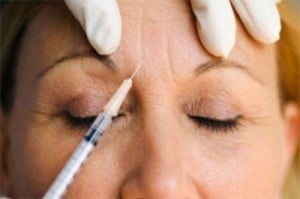Find out about mohs surgery for skin cancer with a certified specialist.
Find out about mohs surgery for skin cancer with a certified specialist.
Blog Article
Browsing Skin Cancer Cells Treatment: The Crucial Function of Mohs in Modern Dermatology Practices
Skin cancer cells, a challenging medical diagnosis, frequently leaves clients grappling with many therapy options. As we explore the details of this procedure, one will certainly value its pivotal duty in skin cancer cells therapy.
Recognizing Skin Cancer: Kinds and Dangers
Skin cancer, a possibly lethal malady, is much extra prevalent than lots of people realize. This condition, brought on by the unrestrained growth of unusual skin cells, primarily results from DNA damages because of direct exposure to the sunlight and ultraviolet (UV) light. There are 3 major kinds of skin cancer: Basic cell carcinoma, Squamous cell carcinoma, and Cancer malignancy. While the former two are less deadly and compose the bulk of diagnosed instances, cancer malignancy is the most hazardous. It represents just regarding 1% of skin cancer cases yet creates the substantial majority of skin cancer deaths - hair loss. Threat factors consist of fair skin, background of sunburn, extreme sun exposure, living at high elevations or near to the equator, having many moles, a household history of skin cancer, and damaged immune system.
What Is Mohs Surgery and How It's Reinventing Skin Cancer Cells Treatment
Regardless of the numerous therapies currently readily available for skin cancer cells, Mohs surgical procedure stands apart as a groundbreaking and extremely efficient remedy. Called after Frederic E. Mohs, the physician that created the treatment, Mohs surgical procedure is an accurate medical strategy utilized to deal with skin cancer. Throughout the treatment, thin layers of cancer-containing skin are gradually eliminated and taken a look at until only cancer-free tissue continues to be. This approach permits the doctor to validate that all cancer cells have been removed at the time of surgical procedure. This degree of precision, combined with the ability to spare as much healthy and balanced cells as feasible, is revolutionizing skin cancer treatment. As a result, Mohs surgery has actually ended up being a keystone of contemporary dermatology methods.
The Benefits of Mohs Surgical Treatment Over Conventional Skin Cancer Cells Therapies
Building on the innovative nature of Mohs surgical treatment, it's critical to consider its many benefits over standard skin cancer treatments. Unlike standard operating procedures, Mohs provides a greater remedy price, usually getting to 99% for newbie therapies and 94% for reoccurring cancers. This accuracy is because of its distinct technique of gradually getting rid of and checking out cells layers up until just cancer-free cells stay (chemical peel). Furthermore, it reduces damage to healthy and balanced skin, resulting in less scarring and enhanced aesthetic websites results. Mohs also provides instant results, removing the anxiety-ridden wait go to my blog usual with various other techniques. Finally, it's economical, as the surgical procedure and tiny exam happen concurrently, removing the need for extra laboratory services. Hence, Mohs represents a considerable innovation in skin-related practices.
The Treatment of Mohs Surgical Treatment: What to Expect Throughout the Refine

Potential Negative Effects and Post-Operative Treatment of Mohs Surgical Procedure
Going through Mohs surgical procedure, like any various other operation, entails possible adverse effects that patients ought to be mindful of. Usual negative effects consist of pain, wounding, and swelling at the surgical treatment website. These are normally short-term and manageable with over-the-counter discomfort medicine and ice packs. In rare situations, individuals may experience infection, blood loss, or an allergic reaction to the look at this web-site anesthetic. Post-operative care is essential to healing and lessening negative effects. This normally entails maintaining the wound clean and dry, taking recommended medications, and staying clear of strenuous tasks. Patients must also participate in all follow-up consultations for wound treatment and surveillance. In many cases, additional therapies may be needed to make sure total elimination of the cancerous cells. Sticking to these post-operative care guidelines can substantially improve recuperation and end results.
Final thought

Report this page